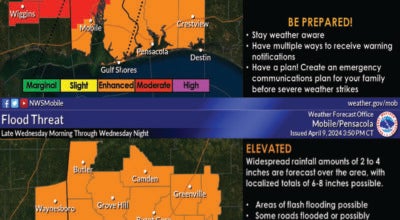May is National Awareness Stroke Month
Published 10:14 am Wednesday, May 15, 2019
|
Getting your Trinity Audio player ready...
|
“I will not have a stroke.” That small sentence is a powerful declaration. A promise of change. A focus on prevention. I will make changes to my daily life that help prevent stroke. I will help my family make changes that prevent stroke. Whether it’s my first or another, I will not have a stroke.
Stroke Risk Factors
Stroke is preventable, treatable and beatable. Up to 80 percent of strokes can be prevented by not smoking, making healthy food choices, getting enough physical activity, maintaining a healthy weight and treating conditions such as high blood sugar, cholesterol and blood pressure.
High blood pressure is the single most important risk factor for stroke because it’s the leading cause of stroke. Normal blood pressure is below 120/80. If you have been told you have high blood pressure, work with your doctor to reduce it.
Irregular heartbeat- known as atrial fibrillation or AFib- causes your heart’s upper chambers to quiver, rather than beating in an organized, rhythmic way, and this increases your risk of stroke five times. The fluttering of your heart may cause blood to pool and clot, and those clots can travel to your brain. In May alone, some 65,000 Americans will experience a stroke with many unaware that they were even at risk. Less than a third will arrive in the emergency room within three hours, the optimal time period for better outcomes.
Having Diabetes more than doubles your risk of stroke. Every two minutes, an adult with diabetes in the U.S. is hospitalized for stroke. Work with your doctor to manage your diabetes and reduce your risk.
High cholesterol increases the risk of blocked arteries. If an artery leading to the brain becomes blocked or throws a clot, a stroke can occur. If you have high blood cholesterol, work with your doctor to get it under control.
Smoking damages blood vessels, leading to blockages and stroke. Don’t smoke and avoid second-hand smoke.
7 Ways to Prevent Stroke
- Monitor your blood pressure.
- Control your cholesterol.
- Keep your blood sugar down.
- Get active.
- Eat better.
- Lose weight if you need to.
- Don’t smoke, period.
Beyond reducing your risk for stroke, knowing the signs and symptoms of a stroke are equally important. Every 40 seconds someone in the U.S. has a stroke and around 800,000 people will have a stroke in the United States this year alone.
“Learning how to recognize a stroke is just as important as reducing your risk factors,” says Robyn Moore, CEO of the National Stroke Association. “We know that recognition of stroke symptoms leads to receiving medical attention faster, which results in better outcomes. Knowing the signs of stroke, how to prevent it, and how to help others around you, just might save a life.”
Sadly, however, fewer than half of 9-1-1 calls for stroke are made within one hour of symptom onset and fewer than half of callers correctly identify stroke as the reason for their call. The acronym FAST is an easy way to identify the most common symptoms of a stroke:
F – Face: Ask the person to smile. Does one side of the face droop?
A – Arms: Ask the person to raise both arms. Does one arm drift downward?
S – Speech: Ask the person to repeat a simple sentence. Is their speech slurred?
T – Time: If you observe any of these signs, call 9-1-1 immediately.
A common misconception is that strokes occur only in older adults. Although, your stroke risk increases with age, a stroke can happen to anyone at any time. About 15% of ischemic strokes occur in young adults and adolescents.
The need for public awareness surrounding stroke prevention and awareness has never been greater. Despite being a leading cause of adult long-term disability, and the fifth leading cause of death, less than one in five Americans can correctly classify all five stroke symptoms. The time to take action is now. This May, during National Stroke Awareness Month, get to know your stroke risk factors and learn to better identify the signs and symptoms of stroke. The life you save just might be your own. Source: American Stroke Association





